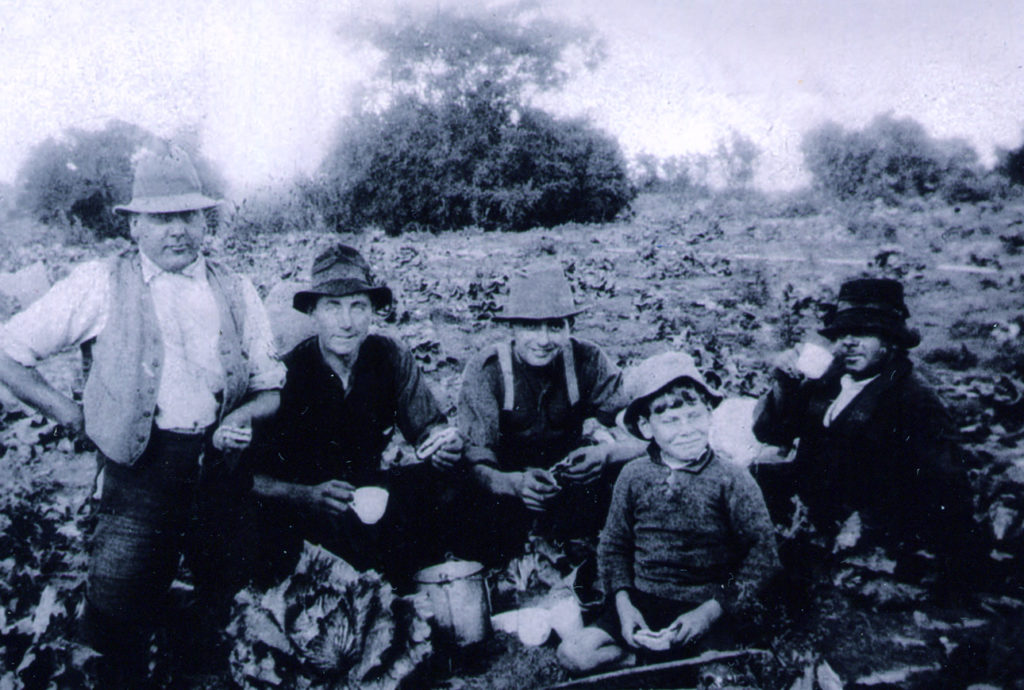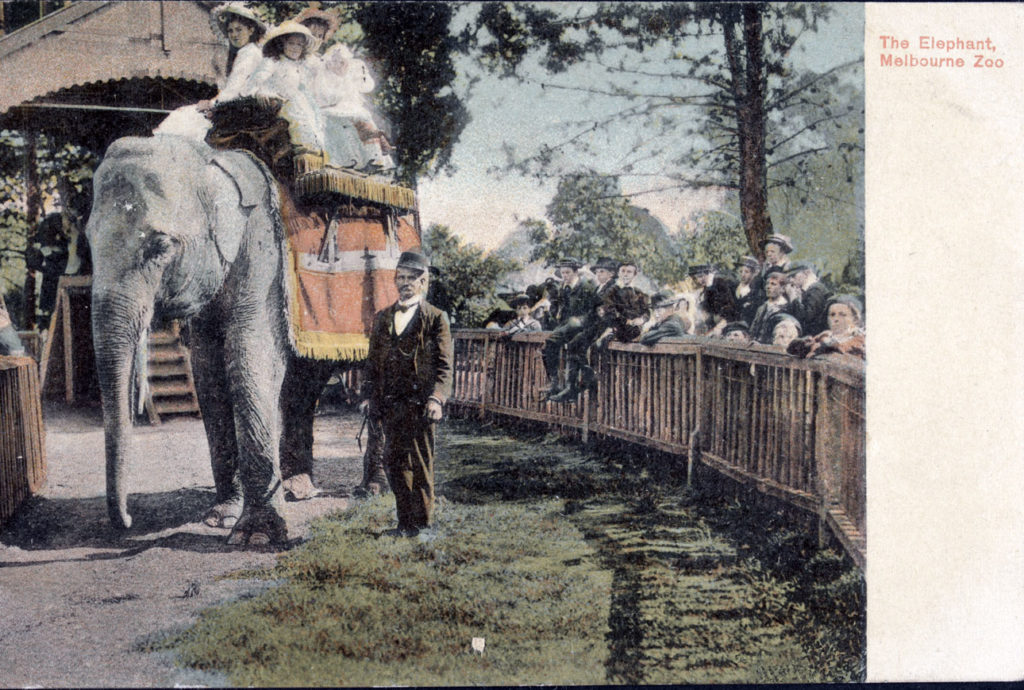Our Stories
School Holidays in early 1900's
Extract from City of Moorabbin Historical Society Newsletter Vol. 12 No. 5 June, 1973
How did the children of the Shire of Moorabbin spend their school holidays in the early 1900’s?
MAY 1973
For a fortnight last month, the weather was more important than usual to many families in Moorabbin. The reason was that the schools were closed for two weeks and children were interested in being out in the open air. Many played out door games in small or large groups; others enjoyed a day in the city or visited the Zoo or the Museum or the Railways Historical Museum at Newport; if wind or rain made being outdoors unpleasant, they occupied themselves at home or attended children’s films or plays or art and pottery classes. The modern suburban child is pretty well provided for during the holidays; what did his grandfather of seventy years ago do while the schools were closed?
It Is first worth noting that there were less holidays than there are now. The school year was divided, as today, into three terms but the first and third term were much shorter than the middle one. The holidays were: four or five weeks in December-January, a week at Easter and Melbourne Show week in September. Some of the single day holidays of today like Australia Day, (formerly called Foundation Day) in our own time were swallowed up in the term holidays: Good Friday, Easter Sunday, Easter Tuesday and Melbourne Show Day. The Queen or King’s birthday was a holiday; a few years after her death Queen Victoria’s birthday, 24th May became Empire Day; in the morning school activities were centred round the British Empire; the afternoon was a half holiday. Labour Day was called Eight Hours Day; it commemorated the movement begun In the 1850’s to limit the hours of work to eight hours which produced the slogan: “Eight hours work, eight hours rest, eight hours recreation.” Melbourne Cup Day has been a holiday since the 1860’s; the fact that we all stop work because some horses are having a race at Flemington has provoked many a smile from visitors and is a comment on the Australian way of Life. Anzac Day, to commemorate the Landing during the World War 1 of Australian soldiers at Gallipoli in 1915 was first made a holiday four years later.
So here are the boy and girl on holidays in the Shire of Moorabbin in 1900.
What do they do in a slowly growing almost rural area? It Is very likely that they both assisted their father in his market garden or dairy farm or poultry farm or orchard. They could help with hoeing, weeding, milking cows, turning the handle of the separator (which separated cream from milk), feeding fowls and keeping their pens clean, and gathering eggs or vegetables or fruit. A boy of twelve or older would help to load a wagon with vegetables and then accompany his father to the Victoria Market. They left at about 10 p.m., reached the market at about 2 a.m. and returned, doubtless very tired, the following afternoon. In the September holidays when the birds were nesting boys would spend some of their time finding nests in the gum and wattle and tea trees, gathering the eggs and delivering them to the Council ranger who paid a penny (1 cent) for sparrows’ eggs, three pence (3 cents) for those of starlings or minahs. (Birds were a pest to the gardeners and this was one way of keeping them down).

Lunch time at Peterson’s market garden, in East Boundary Road, East Bentleigh. c 1920
A boy might be sent several miles with a horse and cart to the blacksmith who would shoe the horse or repair the cart. Children of those days loved to visit the blacksmith and watch the shower of sparks when the smith struck with his great hammer the hot Iron on the anvil and wonder how any man could become so incredibly black as he was.
“And children coming home from school
Look in at the open door;
They love to see the flaming forge,
And hear the bellows roar,
And catch the burning sparks that fly
Like chaff from a threshing-floor.”
The Village Blacksmith by Henry Wadsworth Longfellow
Others would cut wood to be burnt on the open fire indoors or the black iron stove or underneath the copper where the clothes were boiled on washing day.
If a father or mother was in charge of a railway station (several were “manned” at times by women, usually widows who had to support a family in the days before social service) a boy or girl might collect the tickets or open and close the heavy wooden gates which operated at all the level crossings.

This child’s cream, ‘Viyella’ coat is an example of the dressmaking skills of the women of the pioneer settlers families in Moorabbin Shire c1900. On display at Box Cottage Museum.
And inside the house there was plenty for the girls to do. They helped to cook the meals for the usually large family, to make butter, jam and pickles and sometimes bread; they carried water In buckets from the tank or well to fill the “fountain” a black container holding several gallons which stood permanently on the stove and was the only hot water service they knew. And then there was sewing. The shops sold few ready-made clothes; on a treadle machine mothers and daughters made dresses. shirts, trousers (sorry, pants) and underclothing as well as sheets, pillowslips, curtains for windows and beds (curtains for beds?) and valances, gathered frills reaching from bed to floor. When quite young, girls learnt to knit and made socks, singlets (vests) and jumpers for themselves and their brothers and sisters. But there was, alas! no unshrinkable yarn in those days and as a child grew taller his Jumper grew shorter.
If their parents kept a shop In Bentleigh or Highett or Moorabbin or Cheltenham boys and girls often assisted there, selling groceries or meat or bread (self-service was still far in the future). Sometimes the mother kept a shop while the father worked elsewhere; such was the shop In Charman Road, Cheltenham near where the Dispensary is now, kept by Mrs. Walter Meeres whose husband was the Headmaster of State School No. 84 on the other side of the road. Here she sold drapery, haberdashery, school supplies – slates, slate pencils, lead pencils, wooden pens with steel nibs,- (as yet no one had dreamed of a biro) Royal Readers, School papers and exercise books – and sweets, of the latter bull’s eyes, aniseed balls and humbugs were popular.
But there was time for outings too. Families took the steam train to the city for shopping or to visit the Botanical Gardens or the Museum or the Aquarium1 or the Waxworks in Bourke Street2 Some visited two other popular shopping centres – Chapel Street, Prahran and Smith Street, Collingwood. From the city they could take the horse tram to the Zoo (and there they not only saw the elephant but had a ride on him!3

Riding Queenie the elephant at the Melbourne Zoo
courtesy Victorian State Library
There were outdoor activities nearer home. Boys played football and cricket in the paddocks and recreation grounds; cycling was popular; boys and girls rode bikes, though there were often only one or two to a family, wherever the sandy tracks permitted.

East Bentleigh State School Football Team c. 1895
In summer mother would take the children to the baths at Beaumaris or Brighton (‘baths” were a fenced in area of the sea, Including a strip of beach). And there were picnics to the Cheltenham Park and the beaches.
There was some night entertainment too. A circus would spread its great tent on an open space near the station at Bentleigh or Highett or Moorabbin or Cheltenham; here performing monkeys and horses and clowns and girls in spangled dresses delighted the children. There was sometimes a concert given by local artists or a visiting company at one of the halls; there too were penny readings (you paid a penny (1 cent) to hear someone read humorous or tragic passages from Dickens or Shakespeare or other writers). And there were tea meetings or socials in the church halls.
However, there are somethings possible to the modern child which his grand parents of seventy years ago could not do. He could not ride in a car or a plane; he could not ring up his friends or go to see a film or listen to the radio or look at television. All these things were to come – slowly – In the future.
Altogether the boys and girls of seventy years ago probably enjoyed their holidays as much as their grandchildren do today. And there were no six lane highways to cross, no pedestrian crossings to negotiate – and no traffic Jams.
Post Script:
In 2020 what did the school children do during their school holidays? What has changed in the 48 years since this article was written? The computer, play station, mobile phones, social media such as Facebook and Instagram occupied a lot of the time of children.
In 1987 the Education Department introduced a four-term, two weeks holiday in between each term, a longer break of five to six weeks at the end of the school year. Public holidays which include Labour Day, Easter (incorporated into term one holidays), ANZAC Day, Queen’s Birthday, AFL Grand Final Friday, and Melbourne Cup Day.
Footnotes
- Melbourne Aquarium – was at the Royal Exhibition Buildings in Carlton. It opened in 1885. In 1953 the aquarium closed due to a fire in 1953.
- Kreitmayer’s Wax work in Bourke street Melbourne – Exhibition of things rich and rare, ever charming, ever neat, at Kreitmayer’s Wax work.’, where there is an endless kaleidoscope of varying attractions, which never fail to please the eye and charm the heart, and where day and night all creeds and classes, rich and poor, high and low, young and old, may, and do, congregate to enjoy the manifold items of unending interest, the magnificent collection of wax figures, the elegant art of glass-working as shown by Mr. Woodroffe; the marvellous and not less amusement offered by Mr. Davis, his extraordinary feats of legerdemain, his ventriloquial entertainment and his “Spooks.” all, in short, as the poet says, “parts of the stupendous whole.” The Playgoer (1895, March 28). Melbourne Punch (Vic. : 1855 – 1900), p. 7.
- Elephant Rides at Melbourne Zoo – in early 1900’s visitors to Melbourne Zoo would queue for hours to ride on the elephant. The rides ceased in 1962 for safety reasons.